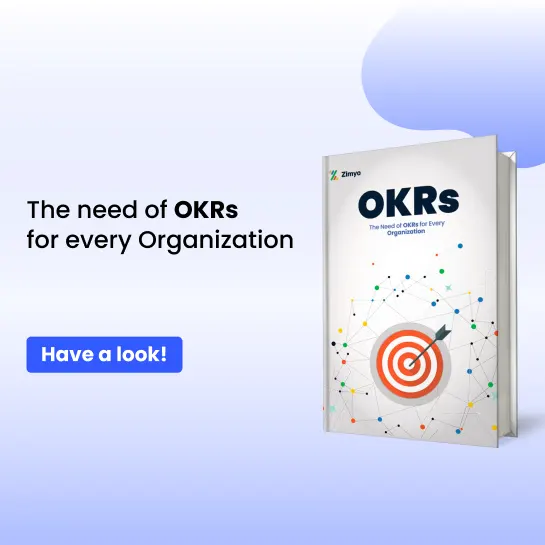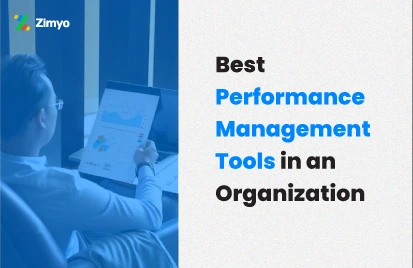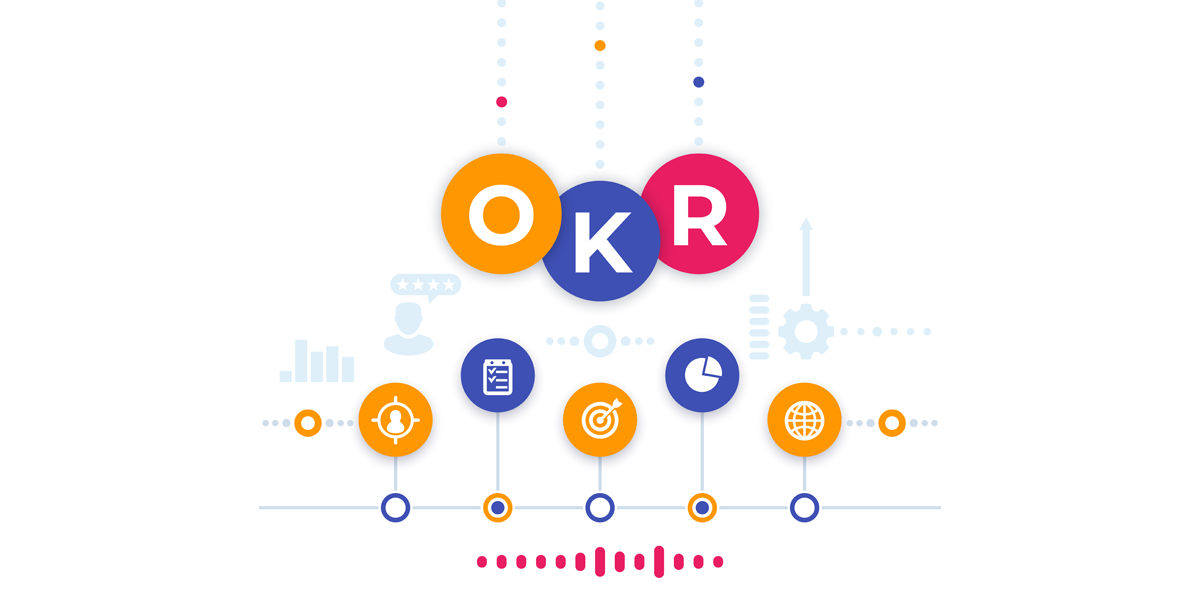Have you ever wondered how companies evaluate the performance of their employees? Well, today, we’re going to understand the Traditional Performance Appraisal Methods in Human Resource Management (HRM). Whether you’re an HR professional, a manager, or someone just curious about how employee performance is measured, this guide is for you.
Why Performance Appraisal Matters?
Let’s start with the basics.
Performance appraisals in HRM is a crucial process in any organization. Appraisals are more than just tools. They are a way to measure, evaluate, and improve employee performance.
How can you know if your team is on the right track without regular check-ins? That’s where performance appraisal methods come in.
Traditional methods have been around for decades, and despite the rise of modern tools, many organizations still rely on these tried-and-true techniques. Why? Because they offer a structured, easy-to-understand way of evaluating employees.
What Are Traditional Performance Appraisal Methods?
Traditional performance appraisal methods focus on evaluating employees based on their ability to take initiatives, use resources effectively, and perform tasks with creativity. Leadership qualities, interpersonal skills, intelligence, and integrity are also part of the equation.
So, what are these methods? Let’s explore the 15 most used traditional performance appraisal methods in HRM.
The Top 15 Traditional Performance Appraisal Methods
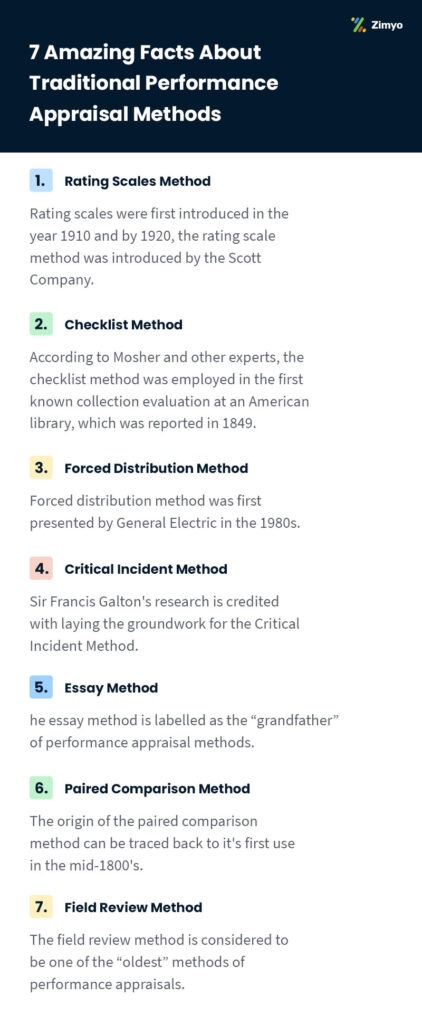
1. The Rating Scales Method
First is the Rating Scales Method. This method is as straightforward as it sounds. It involves using a rating scale, usually from 1 to 10, to evaluate an employee’s performance across various factors. Such as:
- Attitude
- Timeliness
- Efficiency
- Interpersonal skills
For example, let’s say an employee scores a 9 on timeliness. That’s a clear indicator they’re consistently punctual.
But here’s the catch. The Rating Scales Method can be subjective. Two managers might rate the same employee differently based on their interpretations. That’s why it’s crucial to establish clear criteria beforehand.
Useful For:
The rating scale is an effective appraisal method for assessing unique traits and behaviours within your workforce.
Pros:
- Helps in assessing specific traits.
- Structured and standardized.
- Useful for salary adjustments and promotions.
Cons:
- Open to interpretation.
- Recent events can skew the results.
- Can be misleading if not carefully implemented.
Tips To Implement:
- Attempt to be as objective as possible when posing your questions.
- Avoid asking subjective questions.
- Clearly establish criteria and expected outcomes.
- Limit your questions to those that are behavioral in nature.
Interesting Fact:
Rating scales were first introduced in the year 1910 and by 1920, the rating scale method was introduced by the Scott Company.
2. The Checklist Method
Next, we have the Checklist Method. Imagine you’re a manager. HR gives you a checklist of questions about your team’s performance. Simply answer ‘YES’ or ‘NO’.
This method is all about simplicity. Each question carries a numerical value. The total score gives you a quick snapshot of an employee’s performance.
For instance, you might be asked, “Is the employee helpful to other team members?” If the answer is yes, you might give them a full score.
Useful For:
Making employee performance easy to evaluate as their supervisors have to simply choose between yes/no.
Pros:
- Simple and straightforward.
- Reduces bias.
- Provides a clear, organized view of performance.
Cons:
- Limited to yes/no answers.
- Can be time-consuming.
- May overlook some important factors.
Tips To Implement:
- Focus on objective questions that can be answered in yes/no form.
- Try to not put in a lot of questions as it can be very time consuming.
- Make sure that you don’t include a lot of negative statements.
Interesting Fact:
According to Mosher and other experts, the checklist method was employed in the first known collection evaluation at an American library, which was reported in 1849.
3. The Forced Distribution Method
Now, let’s talk about the Forced Distribution Method. This method is popular in large corporations. Here’s how it works: Employees are distributed across a bell curve based on their performance. Some are high performers, most are average, and a few fall below expectations.
This is simple but it’s not without its challenges. This method can be tough on high-performing introverts who may not stand out as much as their more outgoing peers.
Useful For:
Creating an unmistakable separation between the performances of every employee in the organization.
Pros:
- Eliminates leniency.
- Highlights future leaders.
- Easy to implement.
Cons:
- Can discourage innovation.
- May lead to discrimination.
- Not ideal for all types of employees.
Tips To Implement:
- Communicate the guidelines clearly to avoid misunderstandings. Calibration is key to maintaining internal equality.
- All guidelines should be communicated to appraisers in a precise manner by the HR department. Each manager should be aware of how reviews should be interpreted and what each statement represents.
- According to the method’s core principle, teams that perform better should be rewarded with various benefits.
- Appraisers are unable to appraise employees at their discretion; instead, they must adhere to certain guidelines.
- In order to achieve internal equality, businesses should calibrate their performance.
Interesting Fact:
Forced distribution method was first presented by General Electric in the 1980s.
4. The Critical Incident Method
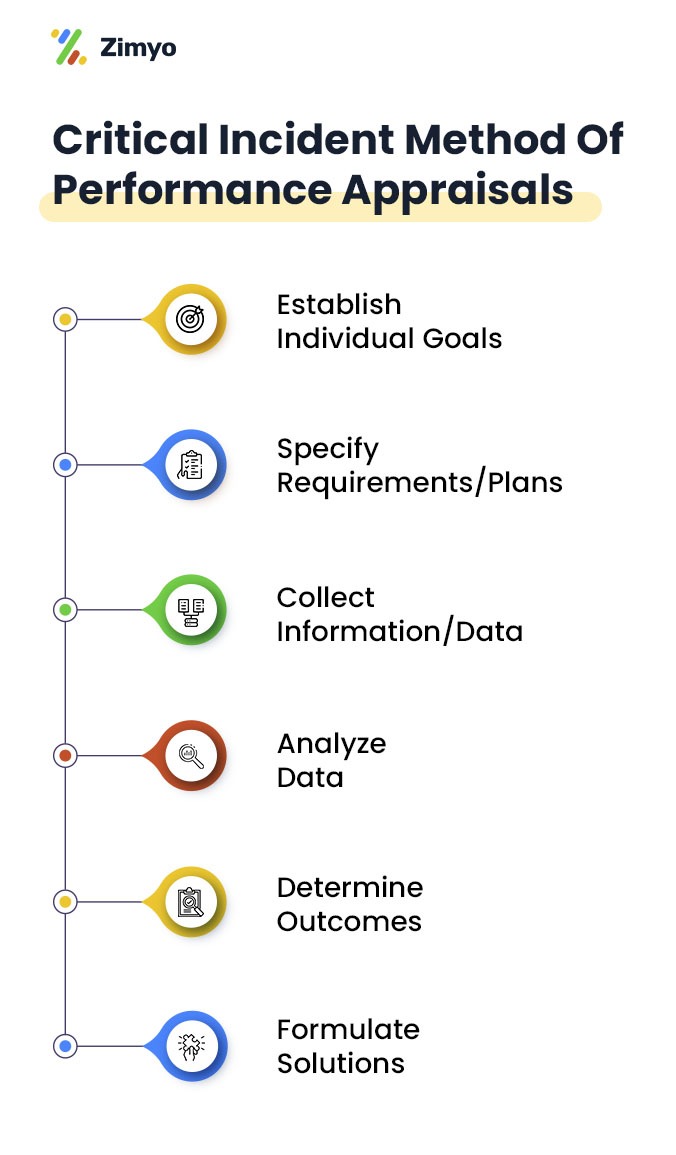
Ever had a colleague who handled a crisis like a pro? That’s what the Critical Incident Performance Appraisal Method is all about. This method focuses on how employees behave in specific situations, both good and bad.
For example, if an employee successfully managed a major client complaint, that’s a critical incident worth noting. But remember, this method relies heavily on the observer’s perspective. So, it’s essential to keep biases in check.
Useful For:
In comparison to other approaches, which may be highly objective and need only rankings to assess employee performance, this method is quite subjective.
Pros:
- Highlights significant events.
- Inexpensive and detailed.
- Flexible and adaptable.
Cons:
- Subject to observer bias.
- May not reflect everyday scenarios.
- Can be time-consuming.
Tips To Implement:
- Begin by identifying and reviewing occurrences that happened during the course of the job.
- The process of fact-finding includes acquiring information about the incident from members.
- Examine the facts and data gathered from the participants by the interviewer and determine the concerns.
- Determine whether the remedy will be able to eliminate the cause of the problem that has been discovered.
Interesting Fact:
Sir Francis Galton’s research is credited with laying the groundwork for the Critical Incident Method.
5. The Essay Method
If you like to write, you’ll appreciate the Essay Method. This method involves writing a detailed description of an employee’s performance. Which may include their strengths, weaknesses, and potential for growth.
This approach gives managers the flexibility to focus on what matters most. But beware, it’s easy to fall into the trap of bias or overemphasis on certain traits.
Useful For:
Giving managers the flexibility to focus on whatever they personally find important about the individual’s performance.
Pros:
- Flexible and open-ended.
- Allows for detailed feedback.
- Can be customized to individual needs.
Cons:
- Time-consuming.
- Prone to bias.
- Difficult to compare across employees.
Tips To Implement:
- Make sure to keep the evaluation essay short and crisp in content.
- Try to highlight the weaknesses and strengths of the employee.
- Avoid the usage of any flowery language.
- Divide your remarks into several pointers, making them easy to analyze.
Interesting Fact:
The essay method is labelled as the “grandfather” of performance appraisal methods.
6. The Paired Comparison Method
Next on our list is the Paired Comparison Method. This method is perfect for small teams. Here’s how it works: Employees are compared in pairs based on a specific attribute. Such as creativity.
For example, if you have five employees, you’ll make 10 comparisons using the formula N(N-1)/2. The result? A clear ranking of employees based on the chosen attribute.
Useful For:
Companies that have a limited number of employees and funds.
Pros:
- Cost-effective.
- Simple to use.
- Helps prioritize key issues.
Cons:
- Limited to specific attributes.
- Not ideal for larger teams.
- May not reflect overall performance.
Tips To Implement:
- Make a list of the options you’ll compare (elements as A, B, C, D, E for example).
- By applying the formula 5(5-1)/2, there will be a total of ten pairs to compare.
- Make a table with six rows and seven columns.
- Compare element “A” to elements “B,” “C,” “D,” and “E,” and set “point” in each column.
- Finally, add up the totals of all the values for each of the variables to combine the findings. You might choose to translate these numbers to a percentage of your overall score.
Interesting Fact:
The origin of the paired comparison method can be traced back to it was first use in the mid-1800s.
7. The Field Review Method
Let’s move on to the Field Review Method. This method is unique because it involves an outsider—usually an HR professional—conducting the performance appraisal.
Why? To reduce bias. The HR professional interviews the employee and their supervisor, then provides an assessment based on the feedback.
Useful For:
Managerial level promotions or when a comparable analysis is needed.
Pros:
- Reduces bias.
- Ideal for managerial evaluations.
- Provides an external perspective.
Cons:
- Time-consuming.
- May not capture everyday performance.
- Can be stressful for employees.
Tips To Implement:
- Prepare a set of predetermined questions to assess the talents and abilities of an employee.
- Interview the employee and ask questions.
- Record the responses of the employee.
- Based on the interview, assign a rating to the employee.
- Take the manager’s review into account before calculating the final rating.
Interesting Fact:
The field review method is considered to be one of the oldest methods of performance appraisals.
8. The Graphic Rating Scale Method
The Graphic Rating Scale Method is a visual take on the traditional rating scales. Instead of numbers, you use a series of bars or graphs to evaluate performance.
For example, you might have a scale from “Poor” to “Excellent” with several points in between. This method is particularly useful for visual learners who prefer seeing data in a graphical format.
Useful For:
Almost any company because of its simplicity, affordability, and ease of use.
Pros:
- Easy to understand.
- Visual representation is effective.
- Useful for quick evaluations.
Cons:
- Still subjective.
- Can oversimplify complex performance aspects.
- May lead to misinterpretation.
Tip To Implement:
Make sure your scales are clearly defined. Avoid using vague terms like “Good” or “Fair” without context.
9. The Confidential Report Method
In some organizations, especially in government or defense, the Confidential Report Method is one of the go-to types of methods for performance appraisals. Here, the supervisor prepares a confidential report on the employee’s performance, which is then reviewed by higher management.
The prominent feature of this method is “discretion”. It’s often used when the stakes are high, and transparency might be counterproductive.
Pros:
– Discreet and confidential.
– Useful in sensitive environments.
– Provides a detailed overview.
Cons:
– Lack of transparency.
– Can be influenced by personal bias.
– Limited employee feedback.
Pro Tip: Ensure that the report is thorough and based on observable facts, not just opinions. This will help maintain fairness in the appraisal process.
10. The Ranking Method
Ever tried ranking your favorite movies? The Ranking Method is similar, but instead of films, you’re ranking employees. This method involves listing employees from best to worst based on their overall performance.
For example, if you have ten employees, you’d rank them from 1 to 10, with 1 being the best performer. It’s simple but effective for identifying top talent.
Pros:
– Easy to understand and implement.
– Useful for identifying top and bottom performers.
– Encourages competition.
Cons:
– Can be demotivating for lower-ranked employees.
– May not consider all aspects of performance.
– Subjective and prone to bias.
Pro Tip: Use the Ranking Method in combination with other appraisal methods to get a more holistic view of performance.
11. The Behavioral Anchored Rating Scale (BARS) Method
The Behavioral Anchored Rating Scale (BARS) Method is a bit more complex but highly effective. This method combines elements of the Rating Scales Method and Critical Incident Method to create a detailed assessment tool.
In this method, specific behaviors are linked to different levels of performance. For example, if “Timeliness” is a criterion, a 5 might mean “Always on time,” while a 1 might mean “Frequently late.”
Pros:
– Reduces ambiguity.
– Focuses on specific behaviors.
– Provides a clear roadmap for improvement.
Cons:
– Time-consuming to develop.
– Requires regular updates.
– Can be difficult to implement.
Pro Tip: Involve employees in the development of the BARS. This will ensure that the criteria are relevant and achievable.
12. The Management By Objectives (MBO) Method
The Management by Objectives (MBO) Method is all about collaboration. Here, managers and employees work together to set goals and objectives for the upcoming appraisal period.
For example, an employee might set a goal to “Increase sales by 10% in the next quarter.” Both the manager and the employee agree on this objective, making it easier to track progress.
Pros:
– Encourages employee participation.
– Aligns individual goals with company objectives.
– Provides clear, measurable targets.
Cons:
– Can be time-consuming.
– Requires continuous monitoring.
– May lead to unrealistic goals.
Pro Tip: Keep objectives SMART—Specific, Measurable, Achievable, Relevant, and Time-bound. This will make it easier to track progress and achieve success.
13. The Assessment Center Method
The Assessment Center Method is one of the more comprehensive performance appraisal methods. It involves putting employees through a series of simulations and exercises to evaluate their performance in various scenarios.
For example, an employee might participate in a role-playing exercise where they have to handle a difficult customer. Their performance in this exercise would then be evaluated by multiple assessors.
Pros:
– Provides a well-rounded view of performance.
– Useful for identifying potential leaders.
– Encourages skill development.
Cons:
– Expensive and time-consuming.
– Can be stressful for employees.
– Requires extensive planning.
Pro Tip: Use the Assessment Center Method for high-stakes roles where leadership potential is critical. It’s a great way to identify future leaders.
14. The 360-Degree Feedback Method
The 360-Degree Feedback Method is all about getting a complete picture of an employee’s performance. Here, feedback is gathered from multiple sources—managers, peers, subordinates, and even customers.
For example, an employee might receive feedback from their manager on their leadership skills, while a peer might provide insights into their teamwork abilities. The result is a well-rounded view of their performance.
Pros:
– Comprehensive and detailed.
– Encourages self-improvement.
– Reduces bias by incorporating multiple perspectives.
Cons:
– Time-consuming and complex.
– Can lead to information overload.
– Requires careful implementation.
Pro Tip: Ensure that feedback is constructive and actionable. This will help employees improve their performance and grow in their roles.
15. The Human Resource Accounting Method
Finally, we have the Human Resource Accounting Method. This method is unique in that it assigns a monetary value to an employee’s performance. It’s a way of quantifying the return on investment (ROI) for each employee.
For example, if an employee contributes $100,000 in revenue and costs the company $50,000 in salary and benefits, their ROI would be $50,000.
Pros:
– Quantifies employee contributions.
– Useful for financial planning.
– Helps in making data-driven decisions.
Cons:
– Can be difficult to implement.
– May not capture non-financial contributions.
– Requires accurate data.
Pro Tip: Use the Human Resource Accounting Method in conjunction with other performance appraisal methods to get a complete picture of an employee’s value to the organization.
The Drawbacks of Traditional Performance Appraisal Methods
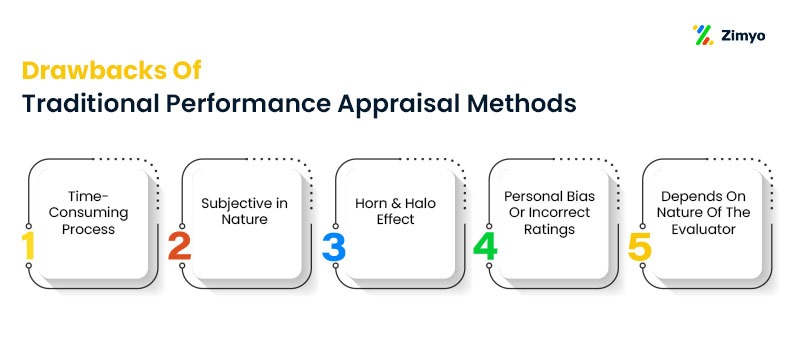
While Traditional Performance Appraisal Methods are valuable, they’re not without their drawbacks. Understanding these limitations can help you use them more effectively.
1. The Halo Effect
The Halo Effect occurs when an employee’s performance in one area influences the assessment of their performance in other areas. For example, if an employee is great at sales, you might overlook their poor time management skills.
2. Leniency and Strictness
Leniency occurs when managers are too forgiving, while strictness occurs when they’re overly harsh. Both can lead to inaccurate assessments and demotivation.
3. Central Tendency
Central tendency occurs when managers rate all employees as average to avoid making tough decisions. This can result in a lack of differentiation and reward for top performers.
4. Personal Bias and Favoritism
Personal bias and favoritism can creep into any performance appraisal process. It’s essential to be aware of these tendencies and take steps to mitigate them.
The Role of Modern Performance Management Systems in HRM
While Traditional Performance Appraisal Methods have their place, modern performance management systems are becoming increasingly popular. These systems offer a more dynamic, data-driven approach to performance management, making them ideal for large corporations.
1. Real-Time Feedback
Modern systems allow for real-time feedback, ensuring that employees are always aware of their performance and can make adjustments as needed.
2. Data-Driven Insights
These systems provide data-driven insights, helping managers make more informed decisions about promotions, raises, and development opportunities.
3. Enhanced Objectivity
Modern systems reduce the potential for bias by using algorithms and data analysis to assess performance.
4. Scalability
As organizations grow, modern systems can easily scale to accommodate more employees, making them ideal for large corporations.
I was able to implement the platform on my own. It helps in assigning the tasks to other employees, conducting surveys and polls, and much more. The ease of use and self-onboarding is something that I would like to appreciate.
Sonali, Kommunicate
Zimyo simplifies attendance management for our organization. The leave and attendance are so streamlined that we have never faced any difficulties with the system.
Anurag, Eggoz Nutrition
Conclusion
You can use any of these methods to evaluate employee performance, however, the majority of these traditional performance appraisal methods are subjective.
But worry not, by using an efficient performance management software, you can make performance appraisals easy-peasy and fruitful at the same time.
Wondering how performance management software can come to your rescue
⋄ Read This: Features of Performance Management System | Zimyo HRMS
This blog will give you detailed information about how a performance management system can prove to be beneficial for your organization.
Zimyo—The Best Performance Management Software
Ready to take your Performance management to the next level? With Zimyo’s AI-powered HRMS, you can effortlessly hire, engage, and pay your teams, no matter where they are in the world.
Trusted by over 2,000 customers and 500,000+ users across 50+ countries, Zimyo is the #1 HRMS for small and medium businesses. Don’t just take our word for it—Zimyo has an average rating of 4.5+ on leading global review platforms like G2, Capterra, and Glassdoor. Join the growing community of satisfied HR professionals and experience the difference Zimyo can make for your organization.
Schedule a demo today and see why Zimyo is the best Performance management software for your business!
Frequently Asked Questions
The answer to this question may vary from organization to organization. There are many small-sized enterprises that rely on traditional methods of performance appraisal. This is because the use of modern tools such as performance management software can be costly for them. Also, startups or small businesses have small teams so they don’t quite feel the need for having a modern performance management system at their disposal. But, most tech giants or mega corporations such as Google, Deloitte, Facebook, etc. are using modern performance management tools to evaluate employee performance.
The objectives of performance appraisals are to:
1. Evaluate employee potential based on skills such as quality of work, leadership style, creativity, and interpersonal skills.
2. Improve the quality of projects or deliverables by helping analyze their strengths and weaknesses.
3. Boost the overall efficiency of the team by identifying the roadblocks and offering help in time.
4. Set measurable and attainable goals to help employees work on something meaningful.

